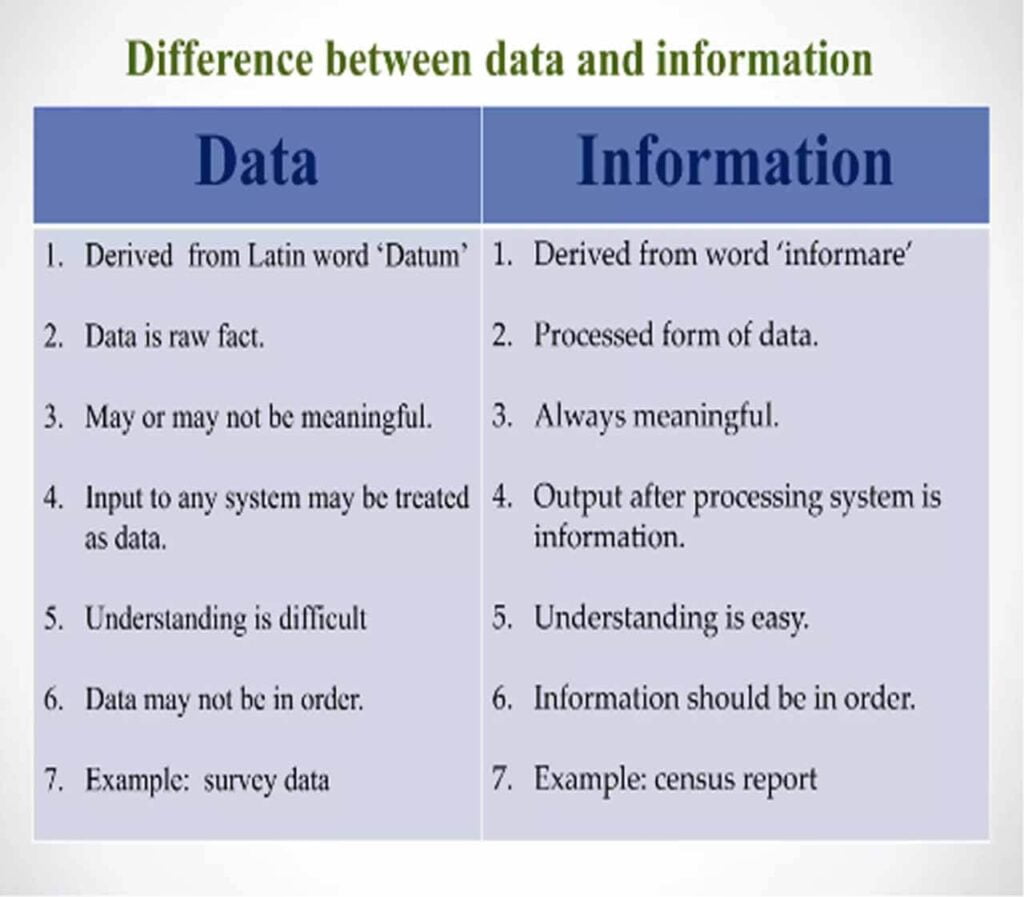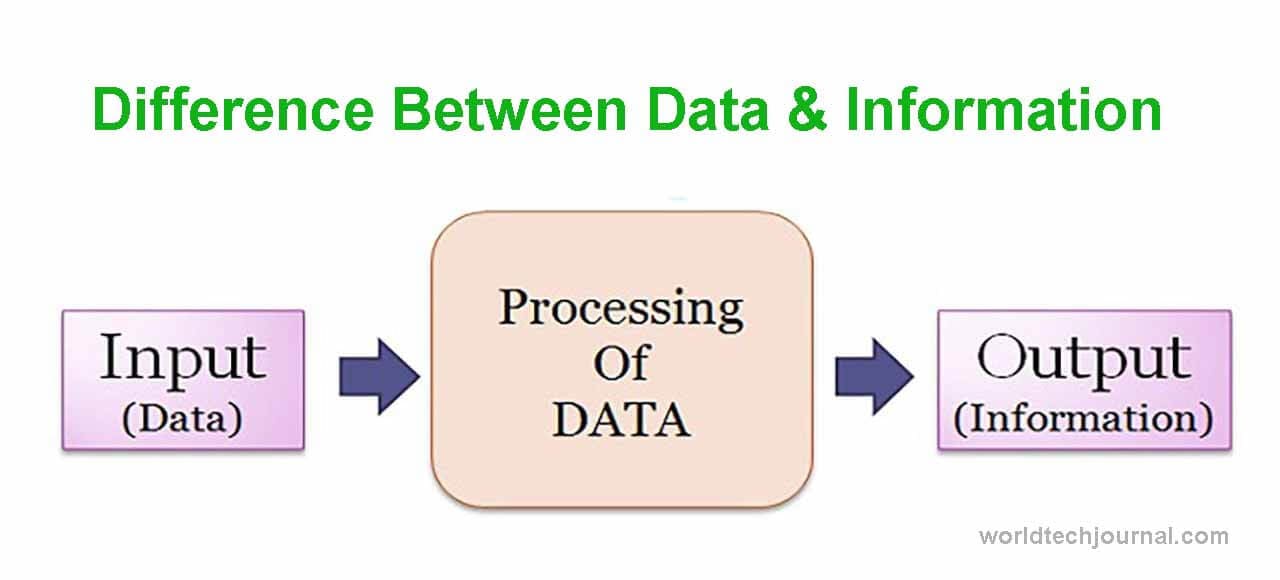Data and information are two very common things used in many sectors today. I will discuss the difference between data and information in todays article.
We should have a good idea about data vs information to make the analysis of business, customers as well as many decision making activities.
Before going ahead about the difference between data and information let’s start with the comparison between data vs information.
Data vs Information
Data and information are closely related concepts but differ in their meaning and usage. In the realm of information management and processing, data refers to raw and unorganized facts and figures.
It consists of discrete elements such as numbers, characters, or symbols that lack context and relevance on their own. Data is often considered the building block from which information and knowledge are derived.
On the other hand, information is the result of organizing, interpreting, and giving meaning to data. It is a processed and structured form of data that provides context, relevance, and purpose.
Information adds value by conveying meaning, enabling understanding, and supporting decision-making processes.
Unlike data, information has significance and can be used to answer questions, solve problems, or make informed choices.
To illustrate, consider a collection of numbers representing temperatures recorded over a month. These numbers alone constitute data.
However, if organized into a table or a graph that shows the temperature trends, it transforms into information.
The organized presentation allows individuals to discern patterns, draw conclusions, and gain insights into the temperature fluctuations during that period.
In essence, while data represents the raw material, information represents the refined and processed output that contributes to knowledge and understanding in various domains, from scientific research to business analytics.
The transformation of data into information involves a deliberate and purposeful effort to extract meaningful insights, making it a crucial step in harnessing the power of information in a variety of fields.
Difference between data and information
The terms “data” and “information” are often used interchangeably, but they have distinct meanings in the context of information management and processing.
There are several difference between data and information from where some most important of them are given here.
1. Nature of data and information
Data: Data consists of raw and unprocessed facts, figures, symbols, or characters. It lacks context and meaning on its own and requires interpretation.
Information: Information is processed data that has been organized, interpreted, and given context. It provides meaning and is ready for consumption.
2. Context and Relevance
Data: Data may not have inherent significance and relevance. It is the foundation from which information is derived.
Information: Information is meaningful and relevant. It has context and answers the “what,” “why,” “who,” “when,” and “how” questions.
3. Usage of data and information
Data: Data is often used as input for generating information. It requires processing and interpretation to become useful.
Information: Information is the output of processed data and is used for decision-making, problem-solving, or gaining insights.
4. Representation of data and information
Data: Data can be represented in various forms, such as numbers, text, or symbols, but it may not convey a specific meaning without interpretation.
Information: Information is presented in a structured and organized manner, making it easier to understand and use.
5. Example of data and information
Data: A list of numbers – 10, 15, 20, 25, 36, 45, 53 etc.
Information: A chart showing the progression of values over time, indicating a consistent increase.
6. In a summary
Data: Data is the raw material that becomes meaningful through processing and organization, resulting in information.
Information: Information adds value by providing insights, context, and relevance to data, making it more useful for decision-making and understanding.
Difference between data and information in a table
The difference between data and information is given in the following table for learning at a glance.
| DATA | INFORMATION |
| Unorganized and unrefined facts only. | Comprises processed and organized data presented in a meaningful context |
| May not have inherent significance and relevance. | Meaningful and relevant. |
| Individual unit which contains raw materials and do not carry any specific meaning. | Group of data which collectively carries a logical meaning. |
| Data is the foundation from which information is derived. | Information has context and answers the “what,” “why,” “who,” “when,” and “how” questions. |
| Doesn’t depend on information. | Information depends on data. |
| Data is often used as input for generating information. | Information is the output of processed data. |
| Raw data alone is not sufficient for decision making. | Information is sufficient for decision making |
| Data can be represented in various forms. | Information is presented in a structured and organized manner. |
| Data has no such significance. | Information is valuable as well as significant. |
| Data is low-level knowledge. | Information is the second level of knowledge. |
| Example: List of name, CGPA etc. in unorganized manner. | Example: Marksheet of a student. |
Difference between data and information in an image
Here is an image showing the difference between data and information at a glance for you.

Final thoughts
In essence we can say about the difference between data and information is that, data consists of raw and unprocessed facts, figures, or symbols lacking inherent meaning, while information is the meaningful and organized output derived from processing data.
Data serves as the foundational building blocks, requiring interpretation and context to become valuable.
Information, on the other hand, is the result of transforming data into a structured and purposeful format, providing insights, answers, and relevance to support decision-making and understanding.
The distinction lies in the processing and interpretation, with data as the raw material and information as the refined output that facilitates informed actions and knowledge.
However, I think you are now clear about the difference between data and information. You can share your thoughts and opinion in the comment section bellow.
Recommended article:
7 Simple Steps To Protect Your Personal And Financial Data
What is data science? All you need to know about data science
What is SSL Certificate | Types of SSL Certificate
What is data science? All you need to know about data science



